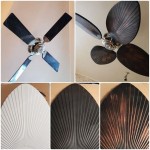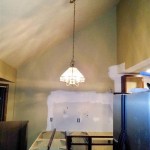If you’re planning a bathroom remodel, you may be considering a variety of shower ceiling options. From materials to installation types, there are a lot of factors to think about when choosing the right ceiling for your bathroom. In this article, we’ll break down the most popular ceiling choices to help you make a informed decision when it comes to your bathroom remodel.
Types of Shower Ceiling Material
When it comes to choosing the right ceiling for your shower, the material you select can make all the difference. Popular materials for shower ceilings include:
- Drywall: Drywall is a great choice for shower ceilings because it is relatively inexpensive, easy to install and provides good sound insulation. However, it requires regular cleaning and maintenance to prevent mold and mildew growth.
- Tile: Tile is another great option for shower ceilings, as it is durable, easy to clean, and can be customized to fit the style of your bathroom. However, it is more expensive than drywall and can be difficult to install.
- Plaster: Plaster is a traditional material for shower ceilings due to its waterproof and fireproof qualities. It is also highly resistant to mold and mildew, but it is more expensive than drywall or tile and may require professional installation.
- Acoustic Panels: Acoustic panels are a great way to reduce noise in your bathroom and can be installed in the ceiling or wall. They are relatively inexpensive and easy to install, but they may not be the best choice for high-humidity areas.
Shower Ceiling Installation Options
Once you’ve selected the right material for your shower ceiling, you’ll need to decide how to install it. Popular installation methods include:
- Drop Ceiling: A drop ceiling is a great choice for shower ceilings because it is easy to install and can be customized to fit the size and shape of your bathroom. It also provides good sound insulation and allows for easy access to plumbing and wiring.
- Direct-to-Subfloor: This method of installation involves attaching the ceiling directly to the subfloor. It is more difficult to install than a drop ceiling and requires the use of nails or screws. However, it provides a more secure installation and can be customized to fit the shape and size of your bathroom.
- Tile Installation: If you choose to install tile as your shower ceiling, you’ll need to use a mortar-based adhesive and grout. This method of installation is more time-consuming and requires more skill than the other methods, but it can also provide a more secure installation.
Finding the Right Shower Ceiling for Your Home
When it comes to selecting the right shower ceiling for your home, there are a lot of options to consider. From materials to installation options, it’s important to do your research and find the option that best fits your needs and budget. With the right material and installation method, you’ll be able to create a beautiful, functional shower ceiling that will last for years to come.















Related Posts








